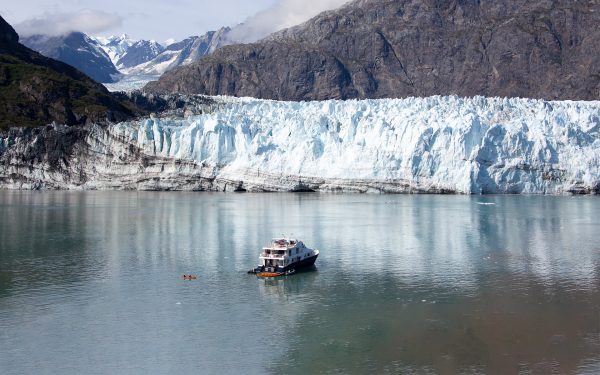This was the most organized, well-planned trip ever!! Every single detail, right down to clothes to bring, was superb. When we arrived at Denali, the North Face Lodge folks knew who we were and where we were going to stay with our room assignment.
We most enjoyed the lodge's sense of community. Everyone was so welcoming and helpful, even on the hikes. The hikes were tremendous! UnCruise was exceptional! They slowed down, pulled over, and even stopped the engines to get as close to wildlife as possible. The weather was so good that we went into harbors and inlets they hadn't gotten to go to all summer.
Anchorage was beautiful and we enjoyed our extra day there, biking the trail and going to the museum. We had great companions on each trip, but there were many Australians having the best time of their lives on the cruise. They really know how to party!! Juneau is very much a tourist trap but we still enjoyed fighting the big ship people and looking around. We also liked Mendenhall Glacier and getting close to the waterfalls there.
We did not want a vacation of just sitting around watching the world go by (although there is a time for that as well!) but rather we wanted to be active to the extent that we could. At Denali and on the cruise we could choose what activity fit our level, and it turned out perfect. This trip fit our wishes of wilderness, wildlife, and adventure to a T!!
Accommodations Review
Superb! Top-notch cleaning of our rooms.
Meals Review
Every meal at North Face was outstanding! Much of it was grown on-site and was fixed and presented beautifully. They even picked wild blueberries and made blueberry tarts!!
The cruise meals were good as well, but you can't get that fresh quality on a boat like you can on land. They were very timely served and hot things were hot and cold things were cold. I was full every day!
Crew & Guides Review
I cannot remember our moderate hike guides' names at North Face Lodge, but both were excellent and very knowledgeable! John made a most superb leader, along with Andi, and were gentle with their bell before announcements.
Katie, Dani, Sarah, really all the crew on board the Wilderness Adventurer were beyond great. They were also knowledgeable and helpful. They were highly trained and had kind, fun-loving spirits.
AdventureSmith Explorations Review
Most excellent! We were well prepared for this trip, right down to the rubber boots, which we really didn't need on the boat because they had plenty of all sizes. But our boots came in handy for the rest of the trip. Shuttles, buses, flights, trains, really every mode of transportation was on time and had friendly drivers.
I can't thank you enough for the best vacation I have ever had. When I had questions, you either called me or emailed me in a timely manner, which alleviated any concerns I had.
I know at least three people who want to "pick my brain" about this trip, and you will be highly recommended.
Traveler Advice
Go for it! Its worth every penny, and you won't regret it.
Featured in this Traveler Review









